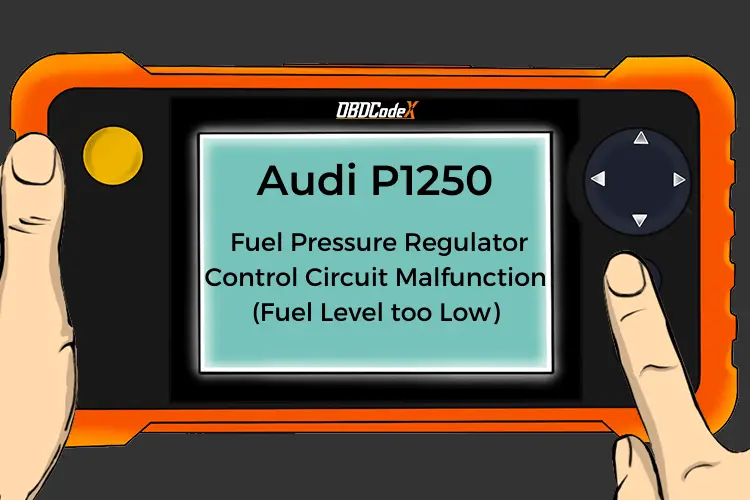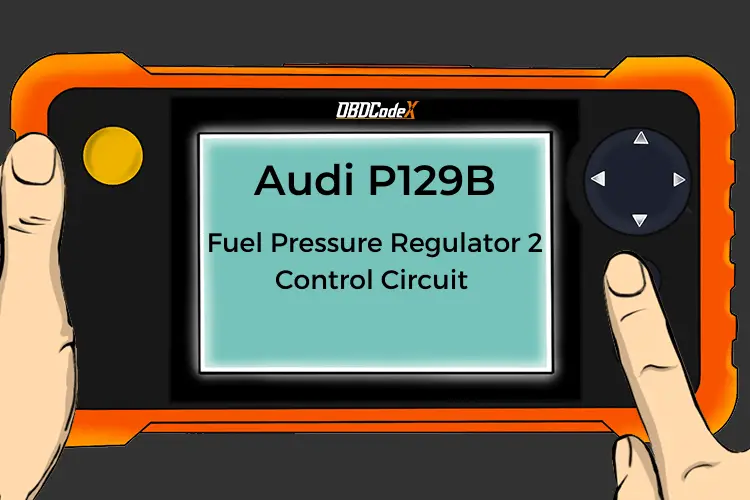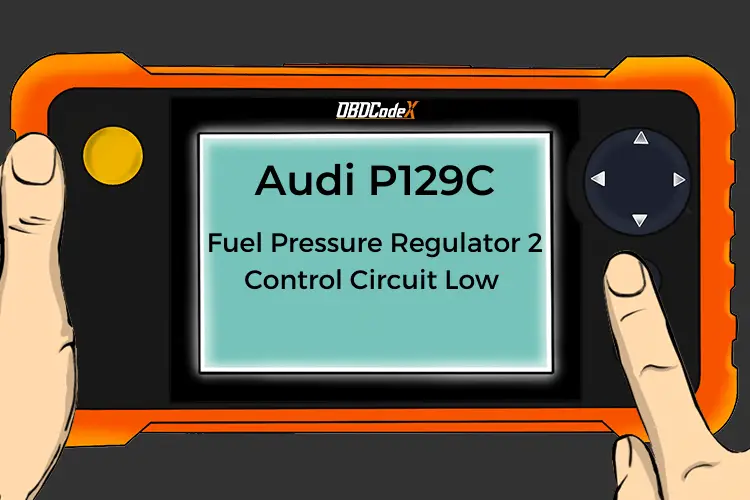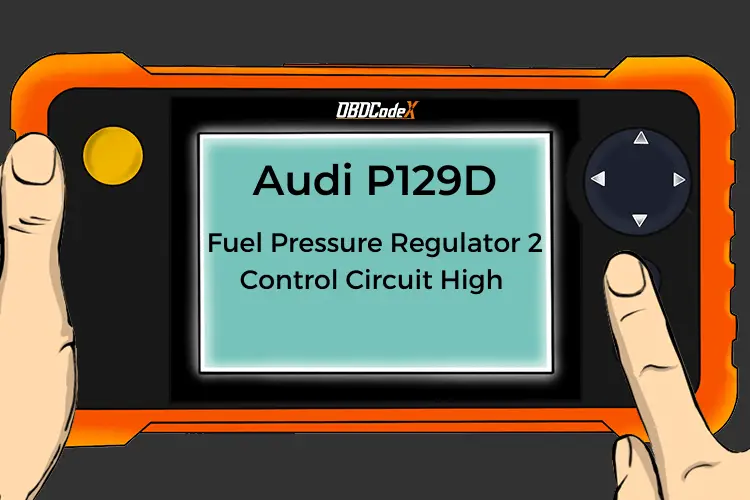P0089: Fuel Pressure Regulator 1 Performance
Is your scanner showing P0089?
No worries. We'll show you what it means and how to deal with it.
P0089: Fuel Pressure Regulator 1 Performance
OVERVIEWWhat Does The P0089 Code Mean?
The fuel pressure regulator is responsible for maintaining a steady fuel pressure. Some vehicles have a fuel pressure built into the fuel rail assembly. Other vehicles with a return-less fuel supply, the regulator is a part of the fuel pump module inside of the tank.
Return-less fuel systems are computer controlled and the fuel pump output and actual fuel rail pressure is determined by a fuel pressure sensor on the rail that uses the temperature of the fuel to determine the actual pressure. The Powertrain control module or Engine control module (PCM/ECM) has determined that the fuel pressure commanded is not within specifications and will set the DTC P0089.
Note: On vehicles equipped with return-less fuel systems with only a supply line – where the fuel does not return back to the tank, the fuel pressure commanded and actual values may need to be checked using an advanced scan tool capable of monitoring these values. If there are any other codes such as Lean O2 sensors present along with the P0089, the P0089 code should be solved first before proceeding with other codes.
What Are The Symptoms Of The P0089 Code?
Symptoms of a P0089 DTC may include:
- Poor fuel economy
- Poor acceleration or hesistation
- Other codes may be present such as lean O2 sensors
- Check Engine Light illuminated (Malfunction Indicator Lamp)
What Are The Potential Causes Of The P0089 Code?
Potential causes of a P0089 trouble code may include:
- Fuel pump output
- Restricted or pinched fuel lines / clogged fuel filter
- Faulty regulator
- Faulty fuel pressure sensor or electrical wiring
How Can You Fix The P0089 Code?
Step 1: Check fuel pressure
Fuel pressure can be checked by using a mechanical gauge attached to the fuel rail. If the fuel pressure is within factory specifications, there may be a fault with the fuel pressure sensor giving false readings to the PCM/ECM.
If a fuel pressure test port is unavailable, the fuel pressure can only be checked using an advanced scan tool or by splicing adapter fittings in between the fuel lines and fuel rail.
Step 2: Test fuel pump
Fuel pump output is determined by the PCM/ECM and may be controlled by an external fuel management computer. The fuel pump may be duty cycle controlled on vehicles with returnless fuel systems. An advanced scan tool may be required to check the output on these type of fuel systems.
Test the fuel pump for sufficient power by locating the fuel pump wiring harness. Some vehicles may be inaccessible to easily test the fuel pump wiring connections. Check for battery voltage at the positive terminal of the fuel pump using a digital volt ohm meter set to the volts scale with the positive lead on the power wire and the negative lead on a known good ground with the key in the on or run position.
The fuel pump power wire may only be supplied voltage during engine cranking or vehicle running condition. Voltage displayed should be close to actual battery voltage.
If there is insufficient power, suspect the wiring to the fuel pump and trace it back to determine if there is any excessive resistance in the wiring, loose wires or loose/dirty connections. On return style fuel pumps, the ground can be checked using the DVOM set to ohms scale with either lead on the ground wire and the other lead on a good known ground. Resistance should be very low.
On return-less style fuel systems, the trigger wire can be checked using a graphing multimeter or oscilloscope set to the duty cycle scale. Typically the duty cycle from the fuel pump computer will be double what the computer commanded duty cycle is commanded by the PCM/ECM. Using the graphing multimeter or oscilloscope, the positive lead will be tapped into the signal wire and the negative lead on a known good ground, it may be necessary to determine which wire is correct by using a factory wiring diagram.
The actual duty cycle should be about double what the PCM/ECM is commanding, if the duty cycle displayed is half of the amount, the settings on the DVOM may need to be changed to accommodate the type of duty cycle being tested.
Step 3: Inspect fuel lines
Look for physical damage or kinked fuel lines that would cause a restriction in the fuel pump supply or return lines. It may be necessary to remove the fuel filter to determine if the fuel filter is clogged and needs to be replaced, it should flow freely in the direction of flow indicated by an arrow on the fuel filter.
Some vehicles are not equipped with fuel filters, and the filter is located on the inlet to the fuel pump itself, it will be necessary to remove the fuel pump module to determine if there is a lot of debris in the tank or if the fuel filter has been crushed or pinched which could also restrict fuel supply to the pump.
Step 4: Check regulator
Regulator- On vehicles equipped with a return style fuel system, the regulator is usually located on the fuel rail itself. The fuel pressure regulator usually has a vacuum line that will mechanically restrict fuel depending on the amount of vacuum supplied by the engine. Check for damaged or loose vacuum hoses to the regulator. If the vacuum hose has fuel inside of it, the regulator may have an internal leak that would cause a pressure loss.
Using a non-damaging clamp, the hose can be pinched off after the fuel pressure regulator – if the fuel pressure is higher with a restriction on the return side of the regulator, the regulator may be at fault. On returnless systems, the fuel pressure regulator may be located inside of the gas tank on the fuel pump module and it may be necessary to replace the fuel pump module as a complete assembly.
Step 5: Test fuel pressure sensor
Test the fuel pressure sensor by removing the connector and checking resistance across the terminals using the DVOM set to ohms scale with the positive and negative lead on either of the connectors. Resistance should be within factory specifications.
Check for reference voltage to the fuel pressure sensor with a factory wiring diagram to determine which wire supplies power to the sensor using the DVOM set to volts scale with the positive lead on the supply wire and the negative lead on a known good ground. Voltage should be around 5 volts, depending on the vehicle.
If voltage is not within specifications, trace the wiring back to determine if there is excessive resistance in the wire supplying power to the sensor. The signal wire can be checked using the DVOM set to volts scale with the positive wire tapped into the signal wire and the negative lead on a good known ground with the vehicle on and running.
The voltage displayed should match the factory specifications depending on the outside temperature and the internal temperature of the fuel inside the lines. The PCM/ECM converts the voltage to a temperature to determine actual fuel pressure. It may be necessary to check the voltage at the PCM/ECM harness connector as well to determine if there is a difference in voltage. If the voltage at the PCM/ECM is not the same as the voltage displayed at the fuel pressure sensor, there may be excessive resistance in the wiring.
Unplug the PCM/ECM harness connector and the fuel pressure sensor connector to check for excessive resistance using the DVOM set to ohms scale with either lead on each end of the harnesses. Resistance should be very low, any excessive resistance may be a fault with the wiring or there may be a short to power or ground present.
Look for a short to power by removing the PCM/ECM wiring harness connection with the DVOM set to volts scale, with the positive lead on the pin for the fuel pressure signal and the negative lead on a known good ground. If the voltage is the same as reference or higher, there may be a short to power and the wiring will need to be traced back to determine if there is a short. Check for a short to ground by setting the DVOM to the ohms scale with either lead on the signal wire at the PCM/ECM harness connector and the other lead on a good known ground. If there is resistance present, there may be a short to ground and the wiring will need to be traced back to determine where there is a short to ground.
Recommended Parts
Below are some recommended auto parts to help you address the trouble code affecting your vehicle and get it running smoothly again:
Note: During the purchasing process, please check carefully whether the part you want to buy fits your car!
Check This Video For Reference
Reference Sources
P0089: Fuel Pressure Regulator 1 Performance, OBD-Codes.









